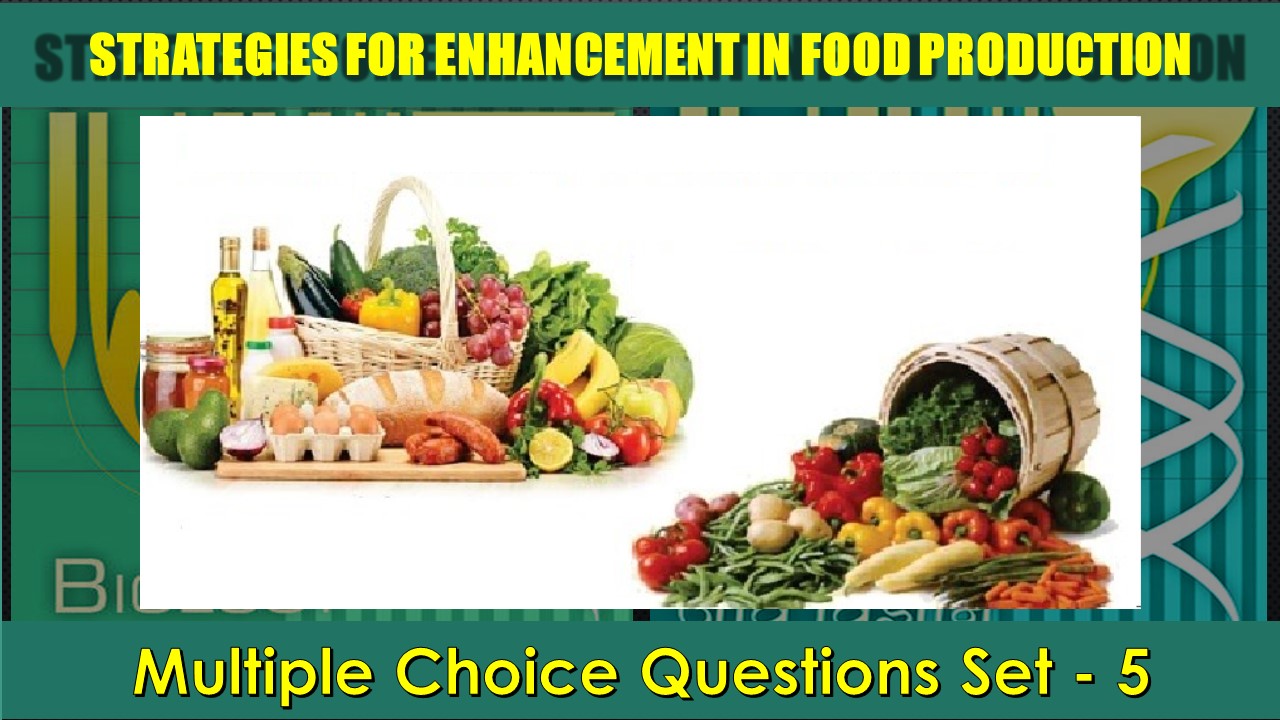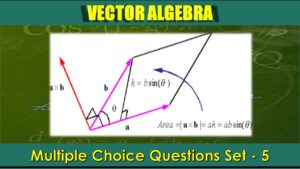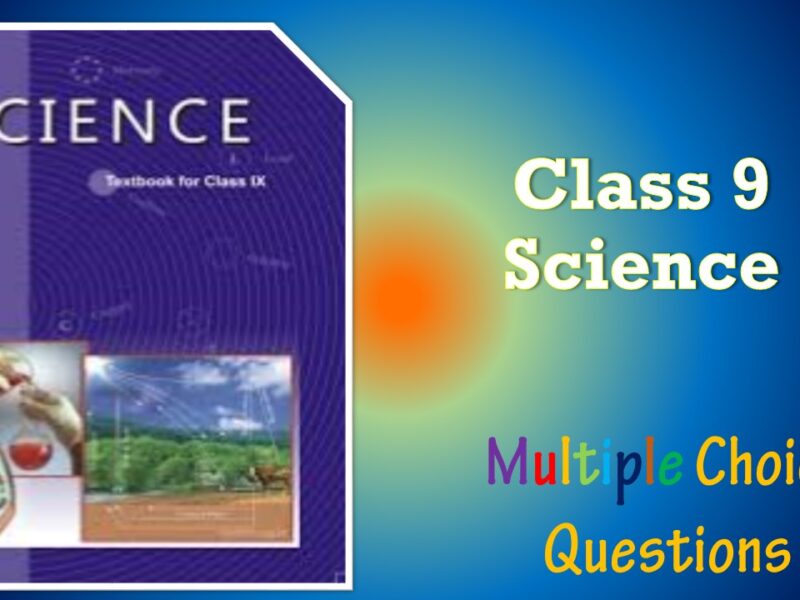CBSE Class 12 Strategies for Enhancement in Food Production Multiple Choice Questions with Answers. MCQ Questions Class 12 Strategies for Enhancement in Food Production with Answers Is Prepared Based on Latest Exam Pattern. Students can solve NCERT MCQ questions Class 12 Strategies for Enhancement in Food Production with Answers to know their preparation level.
Students who are searching for NCERT MCQ Questions Class 12 Strategies for Enhancement in Food Production with Answers are compiled here to get good practice on all fundamentals. Know your preparation level on MCQ Questions for Class 12 Strategies for Enhancement in Food Production with Answers. You can also verify your answers from the provided MCQ Class 12 Strategies for Enhancement in Food Production with Answers. So, ace up your preparation with MCQ of Class 12 Biology Examinations.
MCQ Questions Class 12 Strategies for Enhancement in Food Production with Answers - Set - 5
Question 1:
India’s wheat yield revolution in the 1960s was possible primarily due to
(a) hybrid seeds
(b) increased chlorophyll content
(c) mutations resulting in plant height reduction
(d) quantitative trait mutations.
Correct Answer – (D)
Question 2:
Which ones produce androgenic haploids in anther cultures?
(a) Anther wall
(b) Tapetal layer of anther wall
(c) Connective tissue
(d) Young pollen grains
Correct Answer – (D)
Question 3:
Azolla is used as a biofertilizer because it
(a) multiplies very fast to produce massive biomass
(b) has association of nitrogen-fixing Rhizobium
(c) has association of nitrogen-fixing Cyanobacteria
(d) has association of mycorrhiza
Correct Answer – (B)
Question 4:
Cocoa is the plant from which chocolate is made. Which part is used to extract it?
(a) Flower
(b) Fruit
(c) Seeds
(d) Bark
Correct Answer – (D)
Question 5:
Which statement is correct?
(a) A. indica is largest wild honeybee.
(b) Wax is waste material of honeybee.
(c) Workers are the smallest of the three castes.
(d) Drone of honeybee is diploid.
Correct Answer – (C)
MCQ Questions Class 12 Strategies for Enhancement in Food Production With Answers
Question 6:
Which one of the following constitutes natural silk?
(a) Nitrogen
(b) Magnesium
(c) Potassium
(d) Phosphorus
Correct Answer – (A)
Question 7:
A system of rotating crops with legume or grass pasture to improve soil structure and fertility is called
(a) strip farming
(b) shifting agriculture
(c) ley farming
(d) contour farming.
Correct Answer – (C)
Question 8:
Somaclones are obtained by
(a) plant breeding
(b) irradiation
(c) genetic engineering
(d) tissue culture.
Correct Answer – (D)
Question 9:
The silkworm silk is the product of
(a) salivary gland of the larva
(b) salivary gland of the adult
(c) cuticle of the larva
(d) cuticle of the adult
Correct Answer – (A)
Question 10:
Crop plants grown in monoculture are
(a) highly prone to pests
(b) low in yield
(c) free from intraspecific competition
(d) characterised by poor root system.
Correct Answer – (A)
- NCERT Solutions Class 11 Chemistry Chapter 1 : Some Basic Concepts of Chemistry
- NCERT Solutions Class 11 Chemistry Chapter 2 : Structure Of The Atom
- NCERT Solutions Class 11 Chemistry Chapter 3 : Classification of Elements and Periodicity in Properties
- NCERT Solutions Class 11 Chemistry Chapter 4 : Chemical Bonding and Molecular Structure
- NCERT Solutions Class 11 Chemistry Chapter 5 : States of Matter
- NCERT Solutions Class 11 Chemistry Chapter 6 : Thermodynamics
- NCERT Solutions Class 11 Chemistry Chapter 7 : Equilibrium
- NCERT Solutions Class 11 Chemistry Chapter 8 : Redox Reactions
- NCERT Solutions Class 11 Chemistry Chapter 9 : Hydrogen
- NCERT Solutions Class 11 Chemistry Chapter 10 : The s-Block Elements
- NCERT Solutions Class 11 Chemistry Chapter 11 : The p-Block Elements
- NCERT Solutions Class 11 Chemistry Chapter 12 : Organic Chemistry: Some Basic Principles and Techniques
- NCERT Solutions Class 11 Chemistry Chapter 13 : Hydrocarbons
- NCERT Solutions Class 11 Chemistry Chapter 14 : Environmental Chemistry




